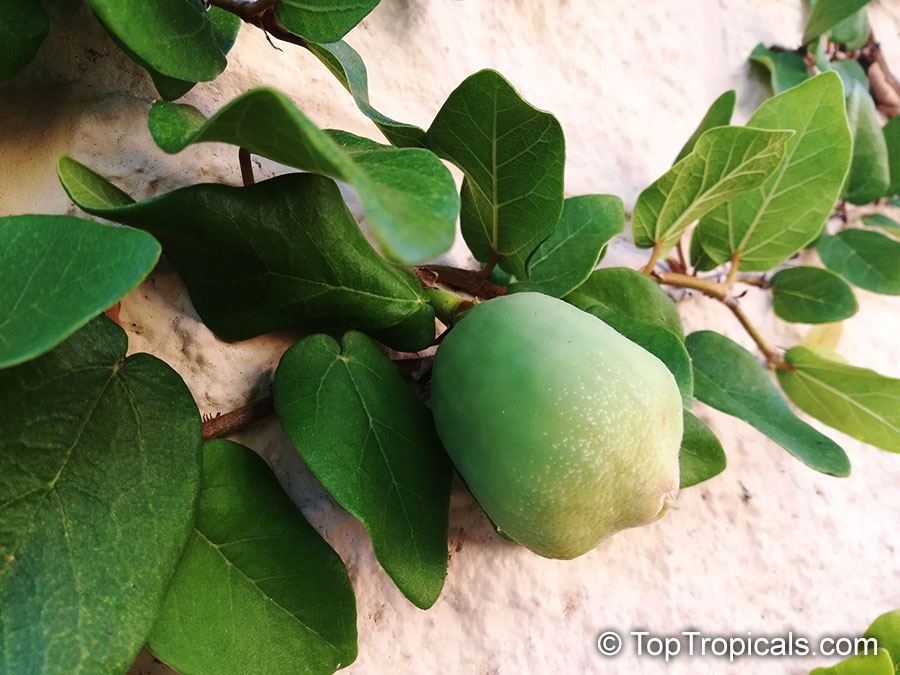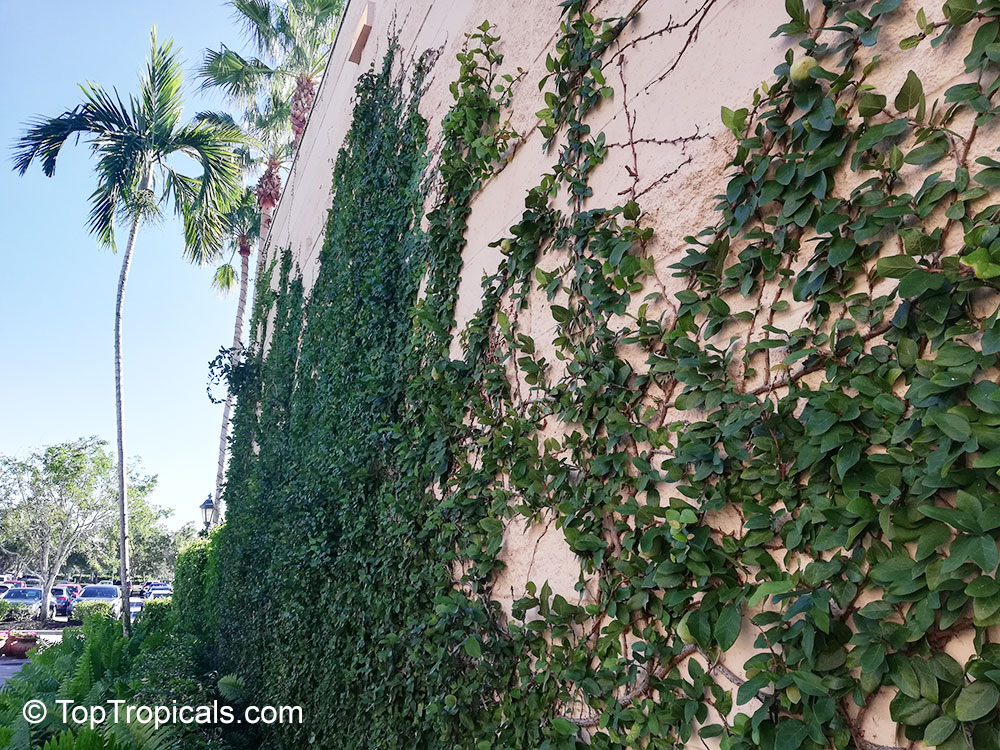Ficus pumila: Creeping fig with unbelievable leaves and fruit
by Alex Butova, the Witch of Herbs and Cats
Alexandra Butova is our columnist, journalist, and photographer, living in Riga, Latvia. She has has been with TopTropicals since Day One (2002), writing about magic plants, travel, and of course cats - from the CatNation she belongs to. Alex is in charge of TopTropicals.ru website.
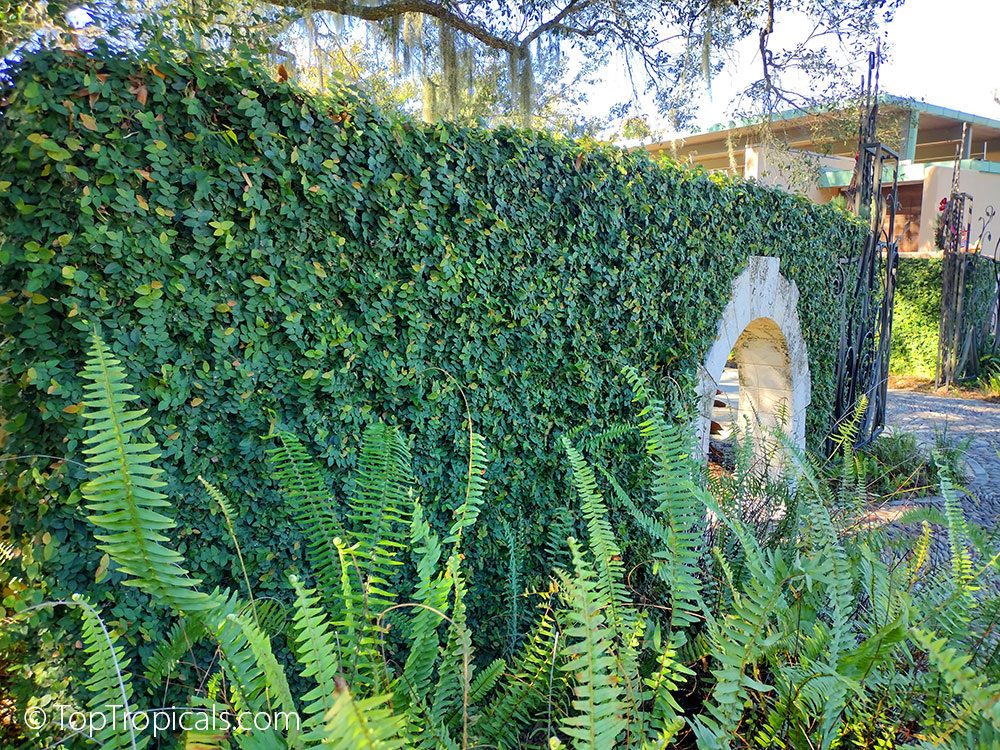
...If you visited tropical and subtropical countries, you probably have seen this curious plant covering fences and walls and even whole buildings, looking like an ivy... But if you looked closer, you might have noticed something unbelievable about this plant... Do these small tiny leaves, and these large glossy leaves, and these fig-like fruit too... do they all belong to the same plant?!.. No way!..
Ficus pumila: Creeping fig with unbelievable leaves and fruit
Ficusis apantropicalgenus of trees, shrubs, and vines in themulberry family(Moraceae), occupying a wide variety ofecological niches; most areevergreen, but some deciduous species are found in areas outside of the tropics and to higher elevations. There are more than 850 members of theFicus genus, many of which have become popular plants for many decades - and for good reason. Not only are they attractive and easy to grow, but they're also excellent and relatively hardy houseplants that can withstand a variety of different settings and even a certain degree of benign neglect.
Among the most popular picks isFicus pumila. Unlike its larger, woody-stemmed cousins, growing into towering trees, creeping fig is a mostly well-behaved vining plant.
Ficus pumila, commonly known as theCreeping FigorClimbing Fig, is native toEast Asia(China, Japan, Vietnam)and naturalized in parts of the southeastern and south-central United States.It is also found in cultivation as ahouseplant.
The Latinspecific epithetpumilameans "dwarf",and refers to the very small leaves of the plant.

This woodyevergreenliana, growing up to 30–39 ft tall, if unpruned, can cover large areas quickly. Very common creeper in tropical countries as it can cover a large wall in no time, within a few seasons. This makes the plant very desirable solution for covering concrete fences and ugly walls.
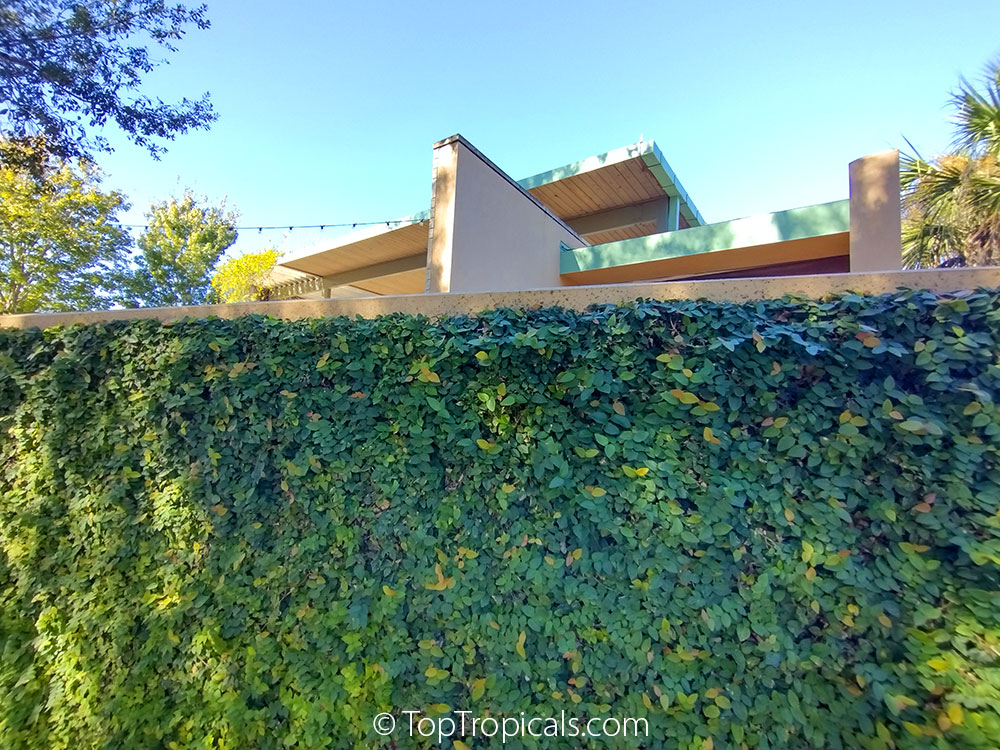
Ficus pumila holds securely to any surface via aerial rootlets,and also climb trees, rocks, etc. up to 15 ft in height or even more!
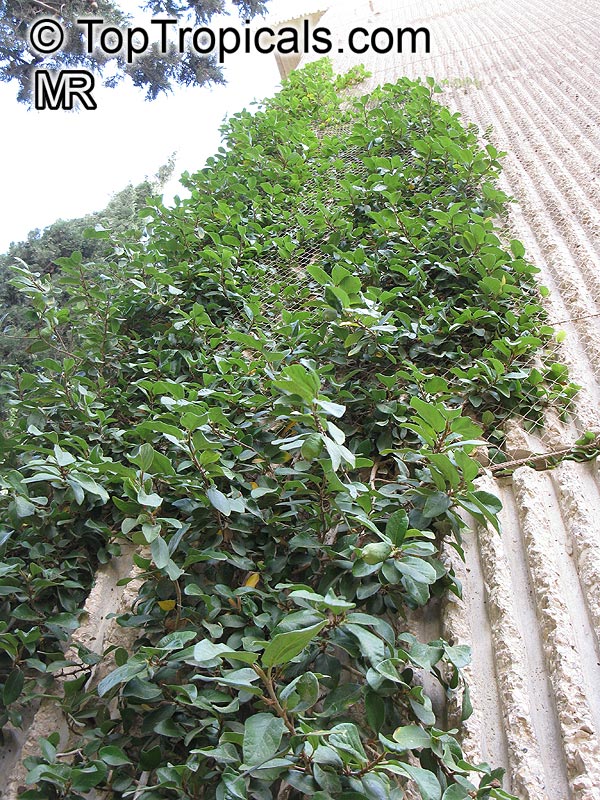
Theaerial rootssecrete a translucentlatexthat hardens on drying, allowing the sticks to adhere to their support.
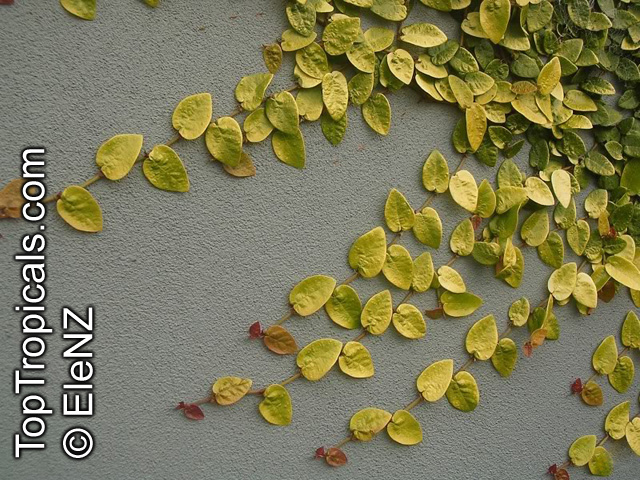
The plant has some curious features! Leaves and fruit...
Curious leaves and fruit
Creeping Fig has two distinct leaf types: juvenile foliage is very small and tend to hug wall, or trellis that it is growing on. Mature foliage is larger to 2 or 3 inches long and the stem get coarse and starts sticking out from rest of vine! The leaves are oval, cordate, asymmetrical, with opposite veins. They forming an interesting pattern.
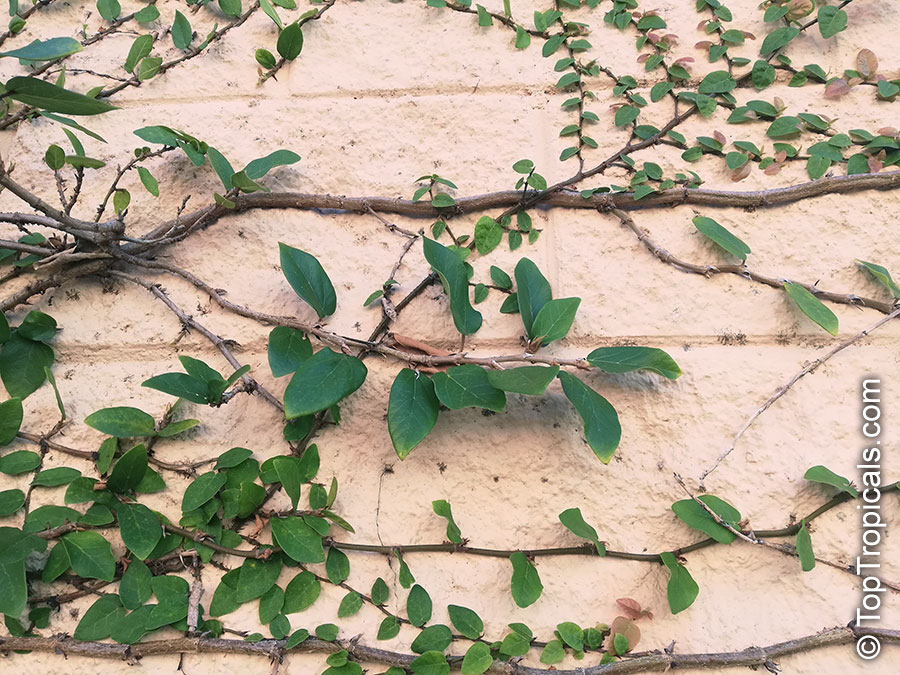
Juvenile and adult leaves on the same plant
When grown outdoors, the adult plant displays minute, axillary, unisexual flowers enclosed in fleshy receptacle - fig... since it's a fig, really! This fig is entered by apical orifice and pollinated by fig wasps (Blastophaga pumilae).
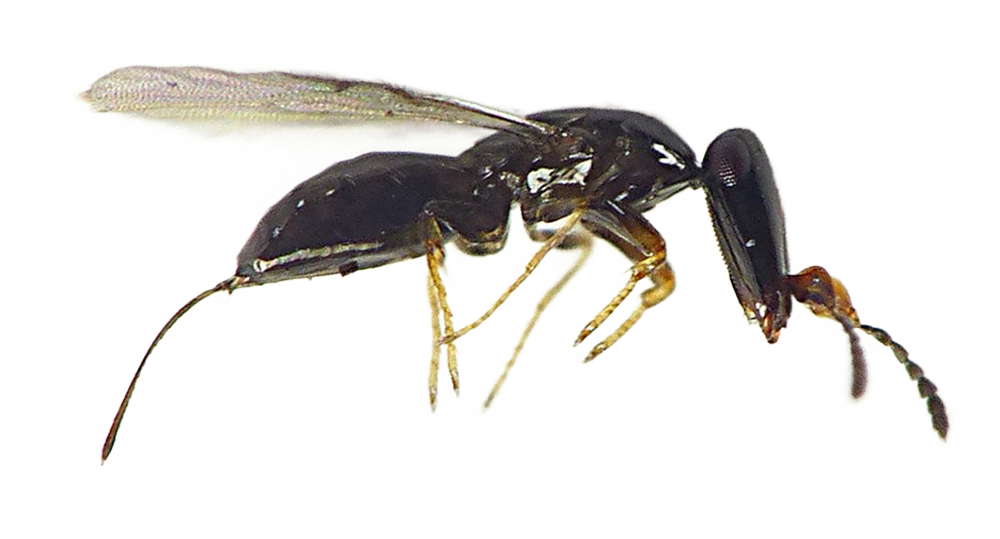
Blastophaga pumilae - Fig Wasp
Hairy pear-shaped fruits may appear on outdoor plants throughout the year. They are green with white flecks maturing to purple, densely hairy, and 2.5 inches long by 1.5 inches wide. Flowers and fruit rarely appear on indoor plants.
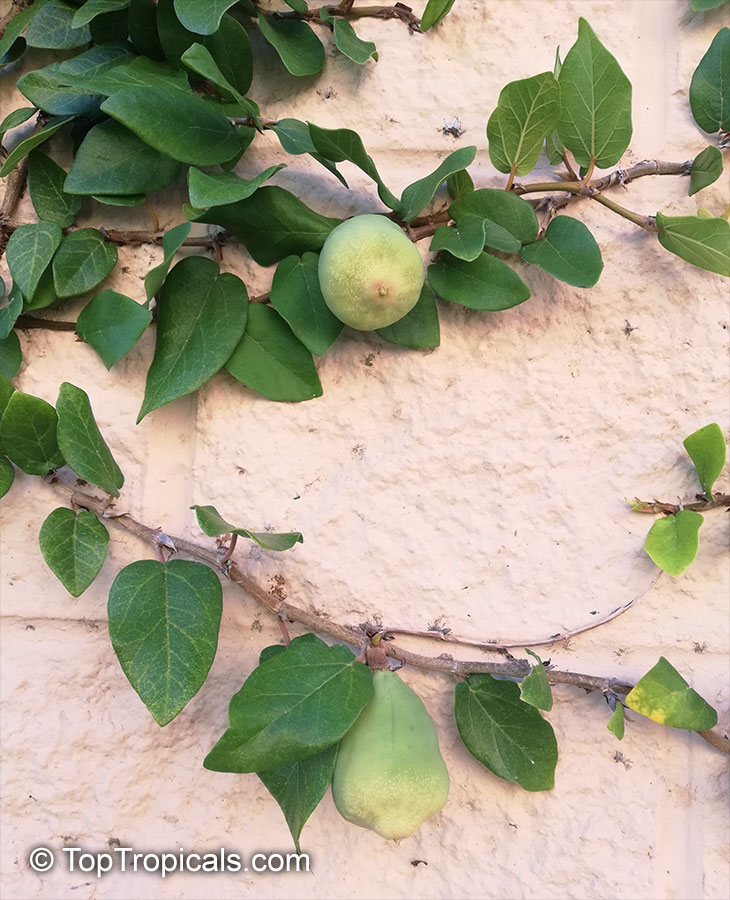
The fruit are generally not edible, nevertheless, the fruit ofFicus pumilavar. Awkeotsangis used in cuisine. InTaiwan, its fruit is turned inside out and dried. The seeds are scraped off and a gel is extracted from their surface with water and allowed to set and form a jelly known in Taiwan asaiyu jelly and inSingaporeasice jelly.
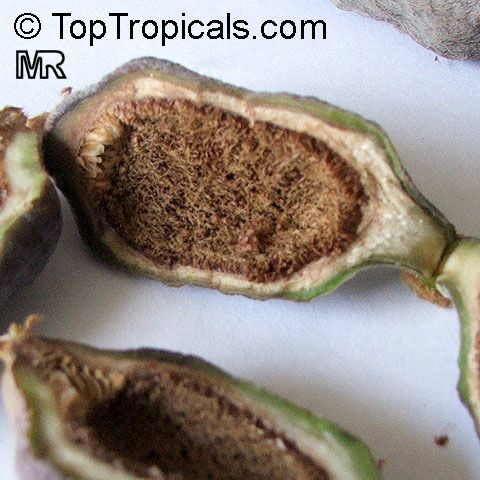
Ficus pumila is very ornamental plant. There are a number of creeping fig varieties available, including types with extra-textured or variegated foliage.
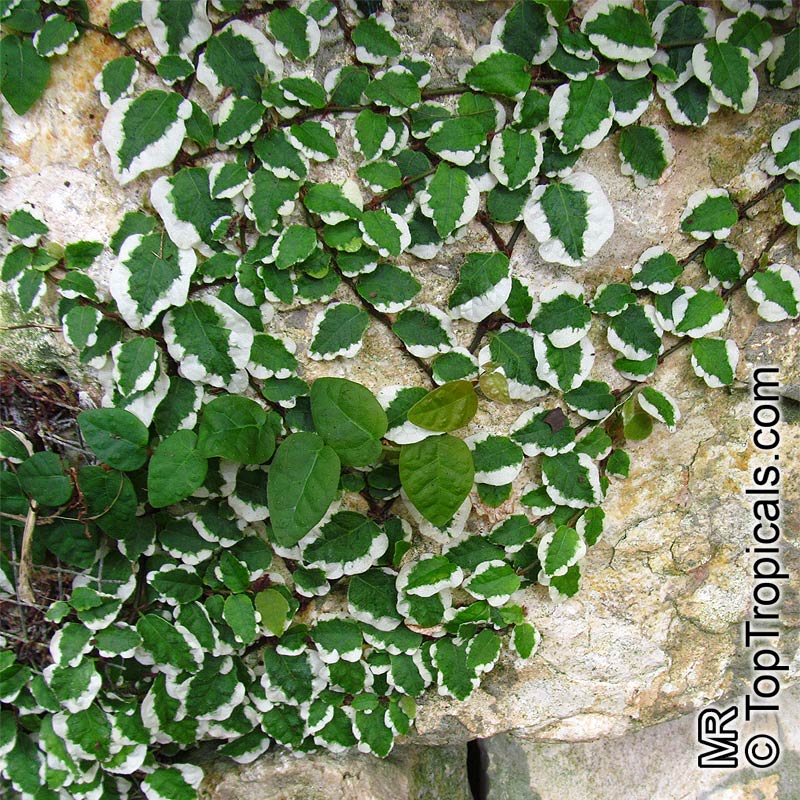
As the common name, "creeping fig" indicates, the plant has a creeping/vining habit and is often used in gardens and landscapes where it covers the ground and climbs up trees and walls and creates amazing jungle-like look. It is a relatively cold hardy plant that can tolerate some light frost for a short period.
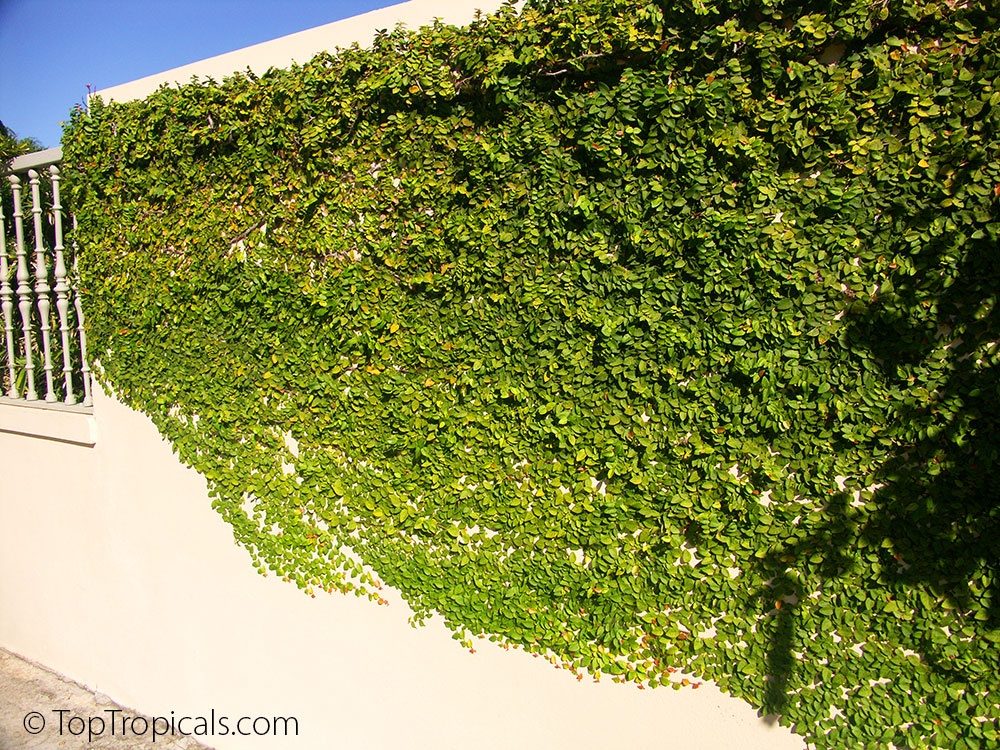
Intemperateregions Creeping fig makes an excellent choice for indoor hanging baskets. It is a tough, drought resistant plant that will also tolerate low lighting conditions.
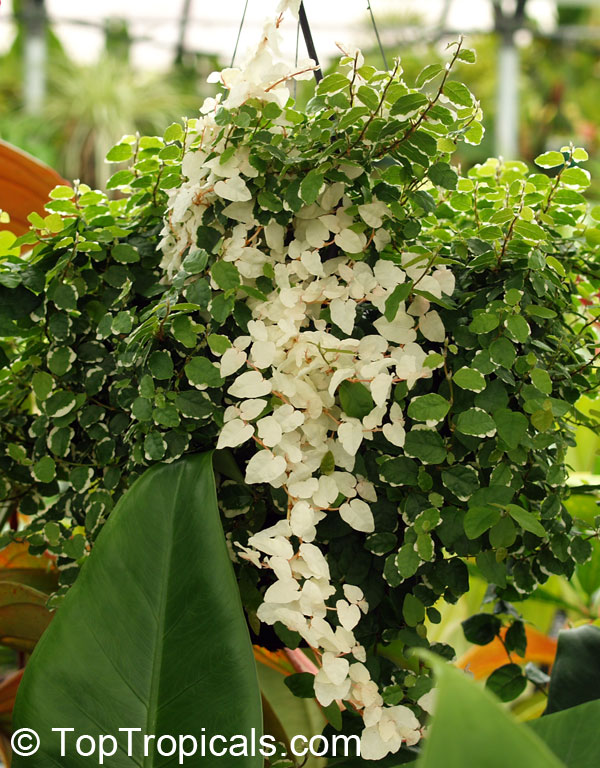
Growing tips
Creeping Fig is also one of the best plants for topiary also it is excellent way to add character to a garden wall. It can turn your garden into a Magic Forest!
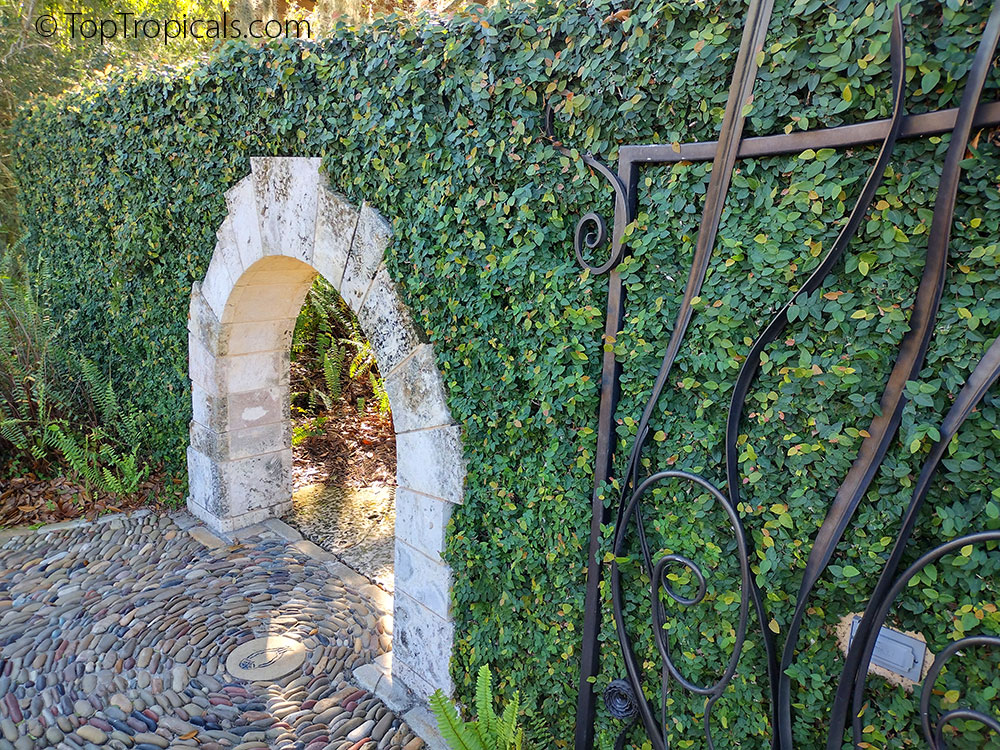
The plant is also an excellent choice for terrariums, where it thrives in moist, humid conditions. Ficus pumila is fast-growing plant and requires little in the way of care. When grown outdoors, the plant prefers partial shade but will tolerate full sun in a moist, well-drained soil. It does best in high humidity.
When grown indoors, place in a soil-based potting mix with bright indirect light or part shade and protection from afternoon sun. Water regularly during the growing season and reduce watering from fall to late winter. Prune as needed.
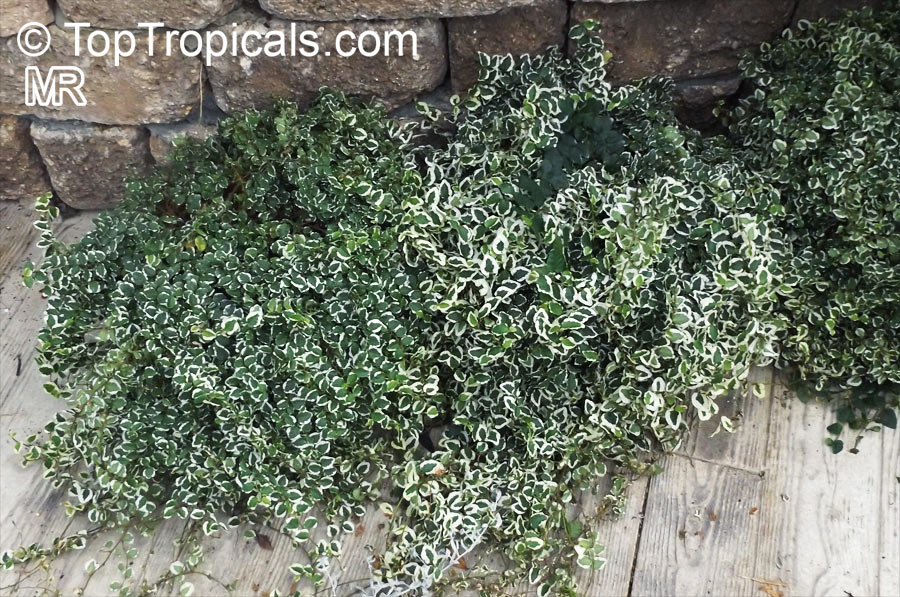
While Creeping Fig doesn't need to be babied to keep growing, but in order to thrive, you can feed it to help with its growth rate. If you choose to feed your plant, we recommend SUNSHINE Robusta - Rapid Growth Booster. It can be used with every watering, year around.
